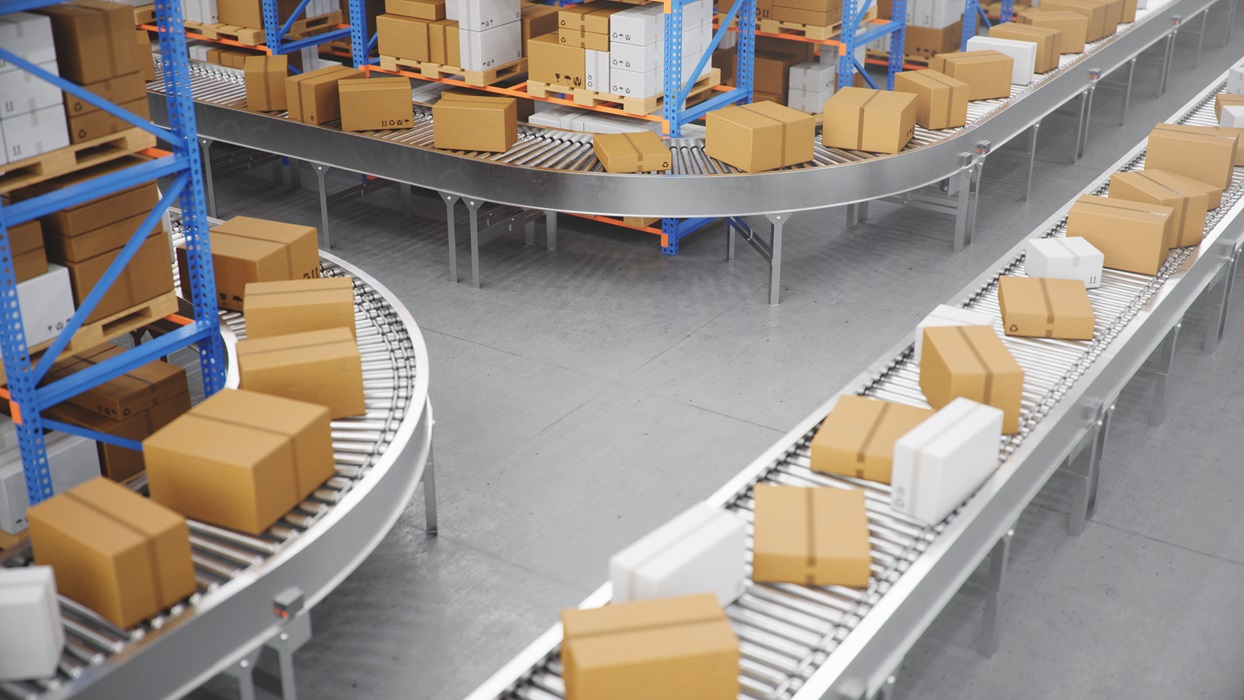There can be a number of different reasons why your warehouse conveyor systems can be obsolete and a financial burden. Here is what you ought to know about conveyor systems.
Warehouse conveyor systems, a technological aid utilised in order fulfilment, facilitate the movement of products across the facility, including from picking zones to packaging areas. On a much broader scale, they resemble the conveyors found in grocery store checkout lanes. Although warehouse conveyance systems provide numerous advantages, they also have a few significant drawbacks. The following analysis examines the advantages and disadvantages of warehouse conveyance systems, highlighting potential financial losses and suggesting alternative solutions.
The inventory you manage in your warehouse can also significantly impact the viability of a conveyance system and its practicality for your warehouse size and workflow.
Advantages of conveyor systems in warehouses
Warehouse conveyor systems are most suitable for facilities that manage a substantial quantity of stock-keeping units (SKUs), especially those that employ zone-based or pass-and-pass selecting methods. In situations where orders necessitate selections from multiple zones, conveyors can be utilised to move products from one zone to another. This eliminates the need for employees to physically carry inventory with them along the picking route.
Because they transport heavier inventory from one location to another within the warehouse, conveyors are also advantageous for storage facilities that manage such a great deal of weight. The greatest inventory, which employees are unable to manually lift, will necessitate alternative solutions.
Drawbacks pertaining to warehouse conveyance systems.
One significant drawback associated with warehouse conveyance systems is their inherent rigidity. A conveyor system addition to an existing facility necessitates significant infrastructure modifications. They are also cumbersome, requiring considerable warehouse space. Without a significant renovation, rearranging the layout of your warehouse will be nearly impossible due to the fixed-in-place conveyor system, which will restrict your options.
Considering the magnitude and intricacy of these systems, the implementation expenses associated with warehouse conveyance systems are to be expected. Implementing conveyor systems in warehouses restricts the ability to modify or organise selecting routes and other travel paths across the facility.
On the other hand, a malfunctioning warehouse conveyor system can virtually impede the entire operation, which is the most significant drawback. Collaborative mobile robots represent the optimal alternative.
Although conveyor systems in some warehouses function satisfactorily, a superior and more functional alternative exists. Collaborative mobile robotics present several notable benefits compared to cumbersome warehouse conveyor systems and antiquated picking methods such as trolleys. Companies are now considering implementing mobile robots to contribute to picking and, in some cases, shifting to a fully robotic picking environment.
Activate within weeks, not months.
Collaborative mobile robots are neither stationary nor as vast as conveyors. This means that implementing them does not require constructing new infrastructure or significant modifications to an existing warehouse infrastructure. On the other hand, warehouse conveyance systems necessitate the construction of new, expensive infrastructure. Additionally, cooperative, mobile robots are user-friendly for staff members to operate. These advantages facilitate the implementation of collaborative mobile robotics in warehouses within weeks as opposed to months.
Flexibility
Additionally, collaborative mobile robotics are a more adaptable solution for contemporary warehouses with seasonal demand fluctuations, in addition to their simplicity of implementation. For instance, warehouse managers can rent and return additional units to accommodate increased demand during periods of high demand and when conditions return to normal. Additionally, transferring collaborative mobile robots between warehouses and distribution centres is a straightforward process. The adaptability that collaborative mobile robots provide surpasses that of warehouse conveyance systems.
The quality of dependability
Warehouse conveyance systems, similar to other equipment found in distribution centres and warehouses, are fallible. A collapsed conveyor system can significantly impact the productivity of a warehouse, potentially resulting in a complete cessation of operations. Although they are repairable, the process could take several days to weeks. The absence of contingency measures in your warehouse could result in significant delays. As an alternative, collaborative mobile robotics enable seamless production and workflow continuity by facilitating the replacement of faulty units during the repair process.
Accuracy improvement
Although warehouse conveyance systems do not impede accuracy, they also do not enhance it either. Regarding conveyors, your employees continue to be the primary determinants of accuracy. Collaborative mobile robots offer a clear advantage by guiding employees through the warehouse until each designated task is finished, thereby enhancing picking accuracy through the use of a directed workflow. Error rates are diminished as a result of the three-scan confirmation procedure (image, scan, put) utilised by different systems.
In contrast to allocating substantial financial resources towards a rigid and cumbersome automated warehouse conveyor system, collaborative mobile robots present a practical and adaptable substitute that can be leveraged to accommodate the evolving requirements of a warehouse.
Bowen Storage assists companies in designing warehouse layouts that can meet the challenges of picking inventory today, whether conveyor systems, robotics, or a blend of both.
If you found this article interesting, you may also be interested in reading the following:
- Industrial Robotics Solving Warehouse Operational Challenges
- Warehouse Operations: Optimising Your Receiving Process
- Anticipated Warehouse Automation Developments In 2024
© 2024 Bowen Storage. All Rights Reserved.









